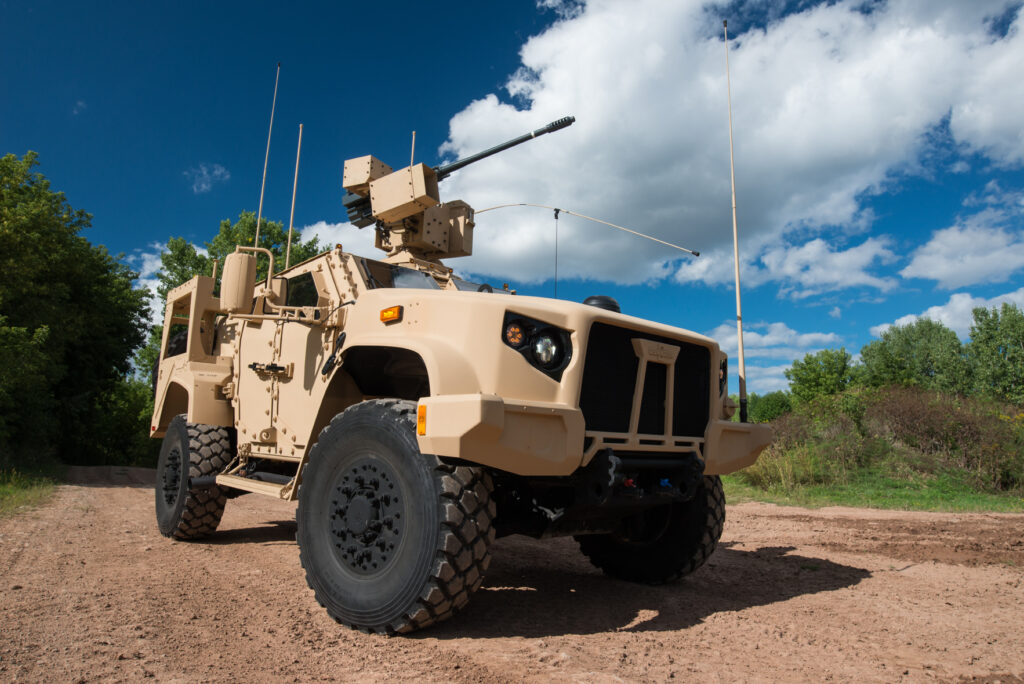
WASHINGTON: In a sign the floodgates may be opening for allies to buy the Army’s newest tactical vehicle, the US appears to be finalizing a $36 million agreement with Montenegro to sell them dozens of brand-new Joint Light Tactical Vehicles.
The tipoff came this morning when Secretary of State Mike Pompeo, who is visiting the country, said the US “offered an agreement to Montenegro for the largest sale of military equipment in the history between our two nations. The United States looks forward to delivering $36 million worth of light tactical vehicles to our NATO ally once this agreement is finalized.”
A defense official confirmed the deal is for 67 Oshkosh-made JLTVs.
If the deal goes through, Montenegro would become the fourth NATO ally to express interest or actually buy into the program, though so far Lithuania is the only country to receive US approval after the State Department signed off on a $170 million deal with the Baltic nation for 500 JLTVs in August.
Mike Ivy, Oshkosh’s senior VP for international programs, wouldn’t comment on the Montenegro deal, but told me via email the “JLTV was intended from the beginning to be an international program,” pointing out the common systems on the vehicle make it easier for allies to work together in the field.
A vastly larger sale is in the works with the UK, which is considering buying 2,747 JLTVs as part of its Multi Role Vehicle-Protected program. British Army officials acknowledged for the first time earlier this month that Oshkosh has been working on a UK variant. In October 2018, Slovenia also signed a Letter of Offer and Acceptance for 38 JLTVs, though no deal has been finalized.
Montenegro joined NATO in 2017, and is a critical part of the Balkan region’s slow turn away from their Russian-dominated past, which Washington and NATO have taken pains to nurture. “It is of strategic importance for Montenegro to have US and EU presence in the Balkans so there would be no space for those countries who do not share the same values,” Montenegro Prime Minister Dusko Markovic said alongside Pompeo Friday.
Like so many DoD programs, the JLTV has had an exceptionally long and checkered past. The effort kicked off in 2006, eventually enduring a series of fits and starts before being forced to undergo a full requirements overhaul in 2011 after the Army realized the design would need to change to meet demands beyond those of counterinsurgency warfare.
In 2015, Oshkosh was awarded a $6.7 billion contract for the initial 16,901 vehicles. In June the Army declared the JLTV was finally ready for full production, clearing the way for the sale of the truck to allies.
Although the program spent 13 years churning through the development cycle, the JLTV has recently come under fire from the Army for being built for the wars in Iraq and Afghanistan, and not the potential conflicts of tomorrow against peer adversaries like China and Russia.
In April, then-Army Secretary and now Defense Secretary Mark Esper said the JLTV, like the Chinook helicopter, was “designed for a different conflict,” but could still play a role on the battlefield. That shot came around the same time that the service slashed $800 million from its planned JLTV purchases, which translates to at least 1,500 vehicles over the next five years. The cut is only a dent in the massive program’s armor, however. The Army has not backed off plans to acquire almost 50,000 JLTVs over the life of the program, which will run into the 2030s.
The Marine Corps is also slated to buy about 9,100 JLTVs in the coming years.
The Army and Marine Corps are planning to buy four versions of the truck, a general purpose model, a turreted gun truck, a TOW anti-tank missile launcher and a two-door utility variant, basically a militarized pickup truck.
Global military spending hits ‘all-time high’ of $2.4 trillion: SIPRI report
The US remains the world’s largest defense spender, outlaying $916 billion last year, a 2.3 percent annual increase, ahead of China in second place, which spent an estimated $296 billion, a 6 percent increase over the same period.



























